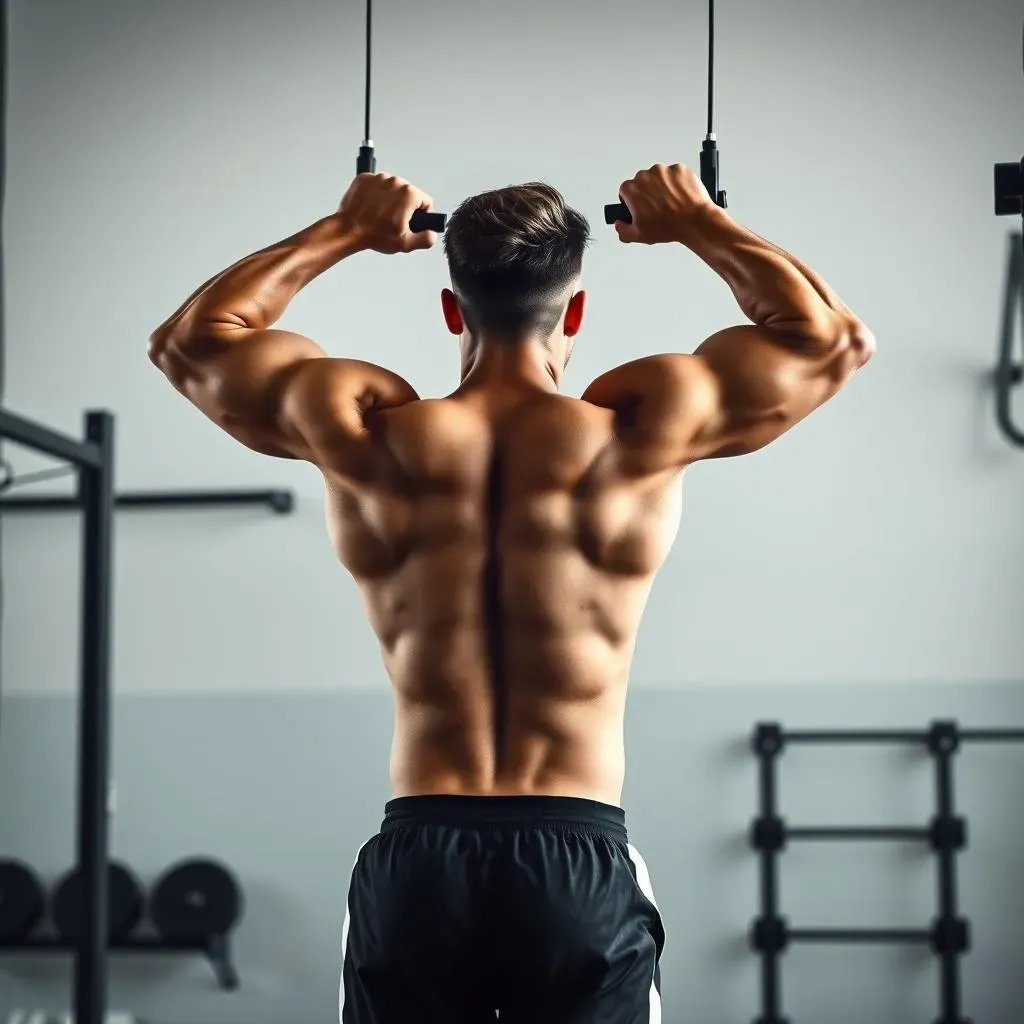Table of Contents
Ever watched someone effortlessly nail a muscle-up or a perfect pull-up and wondered how they got that strength? A big part of that secret sauce is understanding and mastering **calisthenics traction**. It's more than just pulling yourself up; it's about using your body weight effectively to build incredible upper body strength and control. This article will break down everything you need to know about **calisthenics traction**, from the fundamental principles to advanced techniques. We'll explore how to build a solid foundation, delve into specific exercises and progressions, and even tackle common roadblocks you might encounter. Ready to unlock your pulling potential and take your calisthenics game to the next level? Let's get started!
Understanding Calisthenics Traction: What It Is and Why It Matters

Understanding Calisthenics Traction: What It Is and Why It Matters
What Exactly is Calisthenics Traction?
Think of **calisthenics traction** as the art of pulling in bodyweight training. It's not just about hoisting yourself over a bar. It's about engaging the right muscles – your back, shoulders, and arms – in a coordinated and efficient way. Imagine a tug-of-war, but instead of pulling against someone else, you're pulling against gravity. Good traction means you're winning that fight, using leverage and strength smartly. Poor traction? You're probably flailing, using momentum, and not really building the targeted strength. It's the difference between a shaky, barely-there pull-up and a smooth, controlled ascent.
Why Should You Care About Traction?
So, why bother focusing on traction? Well, for starters, it's fundamental to so many cool calisthenics moves. Want to achieve a muscle-up? You absolutely need solid traction. Dreaming of nailing a front lever? Yep, traction is key. Even seemingly simpler exercises like rows and pull-ups become way more effective when you understand how to properly engage your muscles during the pull. Beyond the fancy stuff, good traction helps prevent injuries. When you're pulling correctly, you're less likely to strain your shoulders or rely too much on your biceps. It’s about building a strong, stable, and resilient upper body. Trust me, your shoulders will thank you.
Consider these benefits of mastering calisthenics traction:
- Increased upper body strength
- Improved stability and control
- Foundation for advanced movements
- Reduced risk of injury
- Enhanced muscle engagement
Building a Foundation for Calisthenics Traction Exercises

Building a Foundation for Calisthenics Traction Exercises
Mastering the Active Hang
Before you even think about pulling yourself up, let's talk about hanging. Seriously! The active hang is your starting point. Don't just dangle there like a wet sock. Think about pulling your shoulder blades down and back, engaging your lats. Imagine trying to tuck your shoulder blades into your back pockets. You should feel a slight tension, not just weight pulling on your joints. This active engagement is crucial for proper traction and injury prevention. Start with short holds, maybe 10-15 seconds, and gradually increase the time as you get stronger. Think of it as waking up the right muscles for the job.
The Power of Scapular Pull-ups
Once you've got the active hang down, it's time for scapular pull-ups. These aren't full pull-ups. Instead, from that active hang position, focus solely on pulling your shoulder blades down further. Your elbows shouldn't bend much, if at all. The movement is small, but it's mighty! You're strengthening the muscles responsible for that crucial initial pull in any traction exercise. Think of it like the ignition in a car – you need that spark to get things going. Do sets of 8-12 reps, focusing on controlled movement. Don’t rush it; feel those muscles working.
Negative Pull-ups: Your Secret Weapon
Alright, now for a real game-changer: negative pull-ups. Can't do a full pull-up yet? No problem! This is where you use a box or chair to get yourself to the top of the pull-up bar (chin over bar). Then, and this is the important part, slowly lower yourself down. Fight gravity every inch of the way. This eccentric movement is fantastic for building strength and the specific muscles used in pull-ups. Think of it like downhill running – it builds leg strength like crazy, even though you're going down. Aim for 3-5 second negatives. Start with a few reps and gradually increase as you get stronger. Trust me, these will get you pulling up in no time.
Exercise | Focus | Reps/Duration |
|---|---|---|
Active Hang | Engaging lats and shoulders | 10-30 seconds holds |
Scapular Pull-ups | Shoulder blade control | 8-12 reps |
Negative Pull-ups | Building pulling strength | 3-5 reps with 3-5 second descent |
Advanced Calisthenics Traction Techniques and Progressions

Advanced Calisthenics Traction Techniques and Progressions
Pull-up Variations to Spice Things Up
So, you’ve mastered the standard pull-up? Awesome! Now it's time to explore variations that target different muscles and ramp up the difficulty. Think of it like leveling up in a video game. Chin-ups, with your palms facing you, emphasize your biceps a bit more. Wide-grip pull-ups shift the focus to your back muscles, making them work harder. Archer pull-ups, where you pull to one side, are a fantastic way to build unilateral strength – that's fancy talk for single-arm strength. Play around with different grips and ranges of motion. Each variation offers a new challenge and helps you develop a more well-rounded pulling strength. It's like having a whole new set of tools in your calisthenics toolbox.
Troubleshooting Common Calisthenics Traction Challenges

Troubleshooting Common Calisthenics Traction Challenges
"I Can't Even Do One Pull-up!"
This is probably the most common hurdle. You're hanging there, straining, and nothing's happening. Don't sweat it! Everyone starts somewhere. Remember those negative pull-ups we talked about? They are your best friend here. Also, focus on building a strong foundation with active hangs and scapular pull-ups. Think of it like learning to crawl before you walk. Trying to jump straight to a full pull-up without those foundational movements is like trying to build a house without a blueprint. It's gonna be wobbly and probably collapse. Be patient, be consistent, and those pull-ups will come.
Another thing: are you *really* engaging your back? Sometimes people try to muscle up with their arms only. Imagine trying to squeeze a pencil between your shoulder blades as you pull. That mental cue can make a huge difference in activating the right muscles. And hey, assisted pull-up machines at the gym can be helpful too, but don't rely on them entirely. Your goal is to pull your own bodyweight, right?
Dealing with Grip Issues and Soreness
Grip giving out before your muscles do? That's a classic traction problem. Start working on your grip strength. Dead hangs (just hanging from the bar) are great for this. You can also use thicker bars or try using a towel draped over the bar to make it even harder. Farmer's walks, where you hold heavy weights and walk, also do wonders for grip strength. Think of your hands as the connection point – if they're weak, the whole chain breaks down.
Soreness is another beast. If you're new to traction exercises, expect some muscle soreness, especially in your lats. It's a sign you're working them! But there's a difference between good soreness and injury pain. Make sure you're warming up properly before your workouts and cooling down afterwards. Foam rolling and stretching can also help with recovery. Listen to your body. If something feels sharp or really painful, stop! Pushing through pain is a surefire way to get sidelined.
Challenge | Solution |
|---|---|
Can't do a pull-up | Focus on negatives, active hangs, scapular pull-ups |
Weak grip | Dead hangs, thicker bars, farmer's walks |
Soreness | Proper warm-up/cool-down, stretching, foam rolling, rest |
